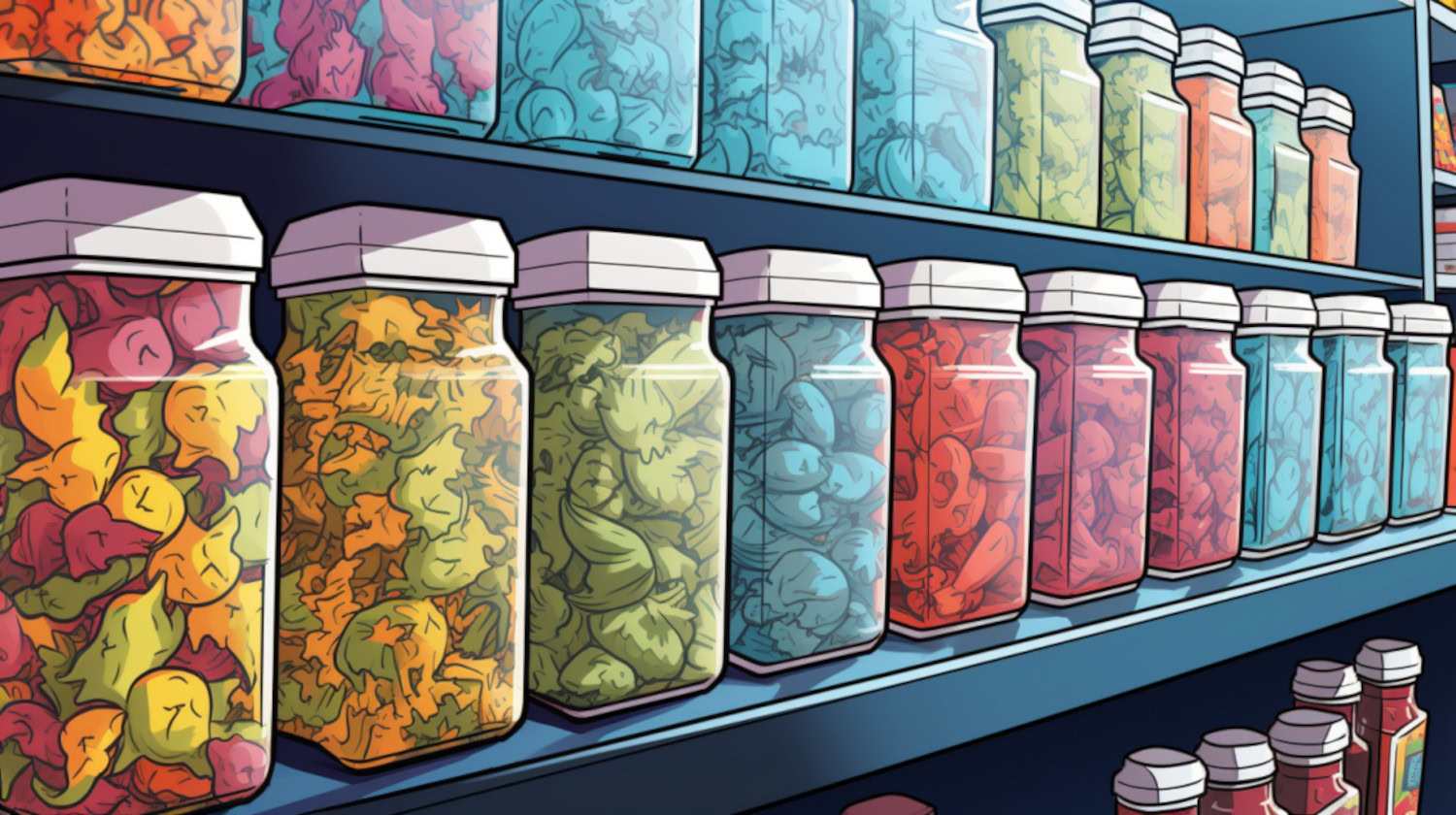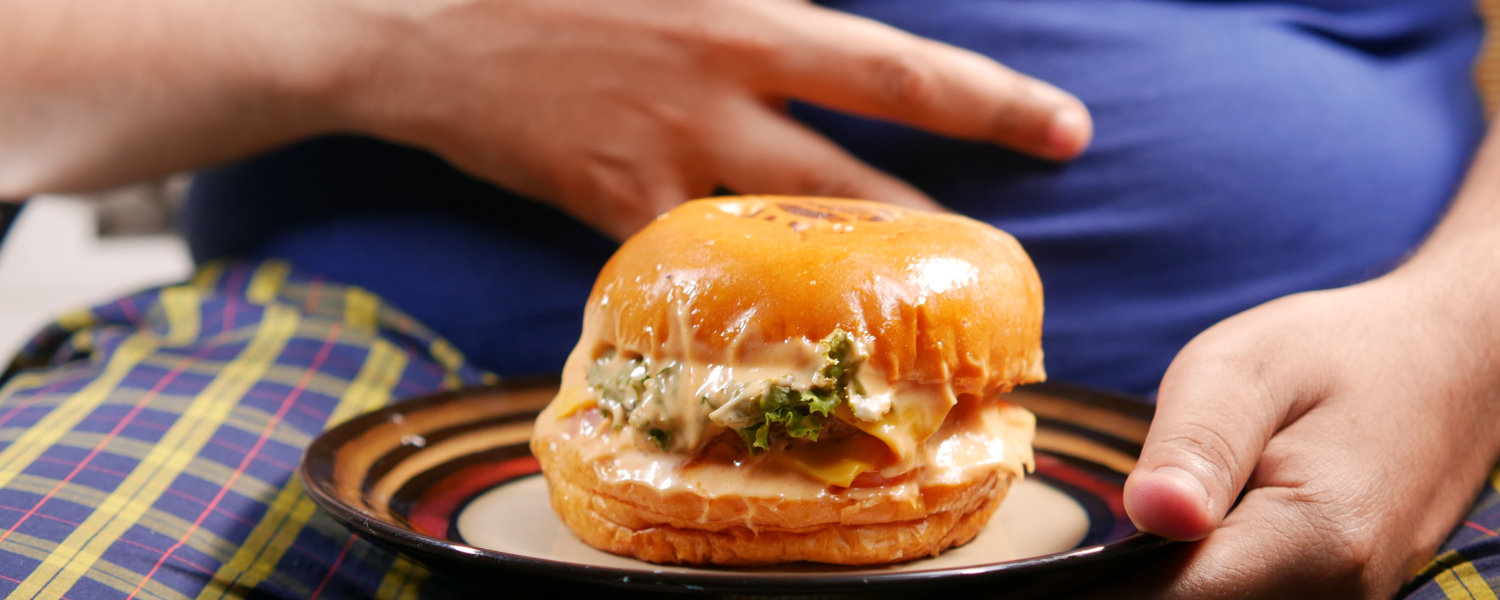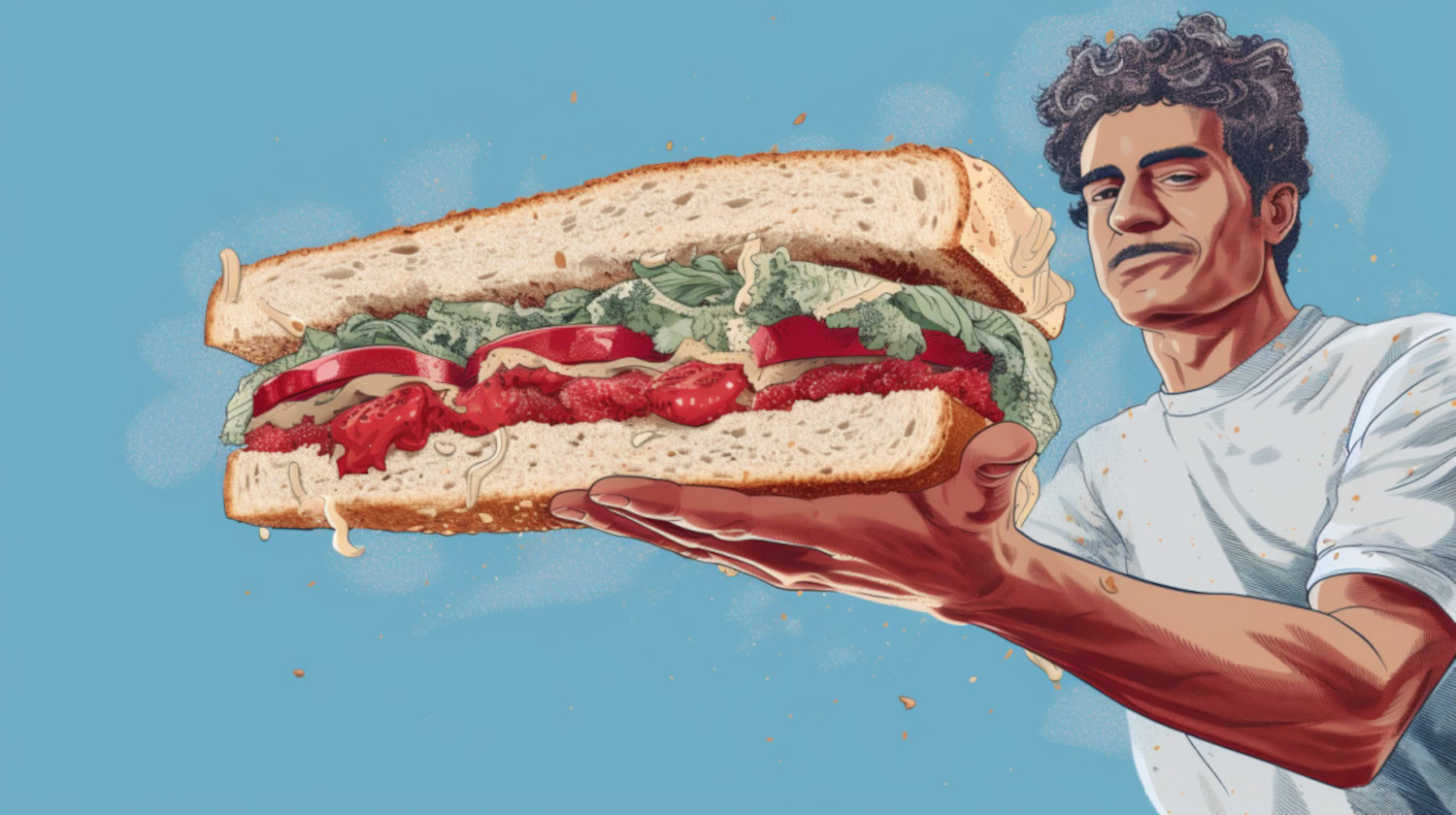In This Article
- Can Weed Help with Nausea?
- Best Types of Edibles for Nausea?
- Infused Beverages and Teas
- Gummies
- Baked Goods
- Chocolate
- What to Avoid
- How to Choose Edibles for Nausea
- Type of Edible
- Underlying Condition
- Cannabinoid Content
- Accuracy of Edibles
- Dosage
- Ingredients
- Making Edibles at Home
- Practical Tips for Choosing the Right Edible
- The 5 Best Edibles for Nausea
- Charlotte's Web Recovery Gummies
- Curio Wellness GI Stimulate Chew
- Berkshire Roots Lemon Ginger CBD 1:1 Chews
- Care By Design Lemon Ginger Focus Gummies
- AbsoluteXtracts Soft Gels: 25mg THC
- References
Key Takeaways
- THC, THCa, CBDa, CBD, CBG, and CBDV may be effective cannabinoids for managing nausea.
- Gummies, teas, and broths are the best edibles for nausea due to their ease of consumption and potent relief.
- Several brands offer top choices for nausea relief, but patients can easily make edibles at home with the proper knowledge and recipes.
Patients today have an expansive menu of cannabis edibles to choose from. They come in diverse flavors, potencies, and forms to suit virtually any preference. Finding the right one to treat a specific condition might feel confusing with so many options. For example, the right edibles for nausea may not be suitable for patients who suffer from inflammation.
Patients often wonder if some types of edibles are more suitable than others for specific symptoms or what to look for when narrowing down options to find the best edibles for nausea.
Can Weed Help with Nausea?
Edibles for nausea might be worth considering, as significant research has demonstrated that THC and synthetic medications like dronabinol have a positive effect on nausea and vomiting.1 Other research supports these conclusions, reflecting that THC and THCA may specifically help with queasy symptoms.2
Separate studies see potential in a combination of THC and CBD, as well as CBD by itself. CBD, CBDA, and CBDV may all have antinausea properties – without THC’s intoxicating and sedative-inducing effects.3,4,5
Users’ personal experiences help further reinforce the conclusions researchers have drawn. The Releaf app helps consumers track cannabis types, including dosing and consumption methods, to discover which combination works best.
Between June 2016 and July 2019, 886 users logged 2220 cannabis self-administration sessions related to treating nausea symptoms. A whopping 96.4% of people logged that they experienced symptom relief using cannabis. Effects were noticeable at the five-minute mark and increased with time after that.6
The question is, do edibles help with nausea? Many patients believe that they can. The right edibles derived from the best cannabis strains for nausea may help make patients hungry, as most cannabis is known to do.
Best Types of Edibles for Nausea?

When it comes to managing nausea with cannabis, certain types of edibles could be more effective than others. Below is a closer look at which types of edibles are considered best for nausea and why.
Infused Beverages and Teas
Infused teas, particularly ginger or peppermint tea, can be soothing for nausea. Adding cannabis tinctures to these teas can enhance their anti-nausea effects. Similarly, broth-based infusions can be a good choice as they are bland and easy to digest.
Gummies
Gummies are one of the most popular types of edibles for nausea relief. They are easy to consume, taste pleasant, and can be dosed precisely. Gummies made with nanoemulsion technology might be particularly effective as they are designed to offer faster absorption, providing quicker relief than other edible options. They're also easy to learn how to make at home.
Baked Goods
Baked goods such as cookies and brownies may also help with nausea and can be made at home using your preferred ingredients. The key is to choose bland, easily digestible items, like simple cookies or plain bread.
Chocolate
Chocolate edibles are another option, especially dark chocolate, which has less sugar and may be easier on the stomach. However, choosing chocolates that are not too rich or overly sweet is essential. Sugary foods might aggravate nausea in some patients.
What to Avoid
Generally, patients should avoid edibles high in sugar or overly rich, fatty ingredients. Sugary foods and drinks can sometimes exacerbate nausea.
High-dose edibles are also not recommended for new or inexperienced consumers, as they may worsen symptoms. It’s best to start with low-dose options to see how the body responds.
How to Choose Edibles for Nausea
Choosing edibles for symptom relief involves understanding the variables involved. After all, not all strains or consumables are created equal.
Several factors can help patients make the best choice to manage symptoms effectively.
Type of Edible
Different kinds of edibles may work better for different individuals.
For example, gummies are often preferred for their ease of use and precise dosing. Gummies made with nanoemulsion technology can provide even faster relief.
Meanwhile, infused teas or broths might be gentler on the stomach compared to rich, sugary baked goods or chocolates.
Underlying Condition
There may be better edibles for chemo-induced nausea than for gastrointestinal or motion sickness-induced nausea. It's important to address symptoms of the underlying condition rather than general symptoms. Since nausea is a non-specific symptom, it's best to narrow in on the condition causing nausea to find the best edibles.
Cannabinoid Content
CBD, THC, and other cannabinoid edibles are all on the market. Understanding their differences is necessary to choose the right edibles for nausea. CBD may have anti-nausea and anti-inflammatory properties, making it ideal for many patients. Alternatively, THC has anti-nausea effects but can be intoxicating. For others, a balanced combination of cannabinoids might provide the best relief.
Accuracy of Edibles
Check the cannabinoid, terpene, and other compound content on the product's label. Then, reference the certificate of analysis (COA) to ensure the product is safe and reliable. Consider, also, that some terpenes may be more effective at relieving feelings of nausea
Dosage
Take time to determine your ideal dosage. This is essential to avoid worsening nausea instead of helping to relieve it. New or inexperienced consumers should start with low-dose edibles. Then, wait and see how the body responds. Most products will have dosing guidelines.
Ingredients
Consider the ingredients in the edibles. Edibles high in sugar or overly rich, fatty ingredients may worsen nausea. Look for edibles with natural ingredients and those that include other anti-nausea elements. Ginger, peppermint, and other antiemetic ingredients may help enhance the edibles' overall effect.
Making Edibles at Home
For some patients, making edibles at home can be a practical solution. Homemade edibles allow for complete control over the ingredients and dosage. Patients can tailor simple recipes to individual preferences and needs, from nausea gummies to infused teas.
Practical Tips for Choosing the Right Edible
- Start Low and Go Slow. Begin with a low dose of edibles to see how your body reacts.
- Check the Legality. Verify the legality of edibles in your area to ensure you know whether they are legal in your state.
- Experiment with Different Types of Edibles. Compare different options like THC drinks vs. edibles to see what works best for you.
The 5 Best Edibles for Nausea

Based on past patient reviews, certain edibles stand out when it comes to managing nausea. Recipes like weed cupcakes and brownies may come in handy for consumers who opt to make edibles at home. Otherwise, below are the top five edibles reported to be most effective for nausea relief.
Charlotte's Web Recovery Gummies
Charlotte's Web's Recovery Gummies combine CBD with turmeric and ginger. These ingredients are known for their anti-nausea and anti-inflammatory properties. They pair well with CBD, potentially providing a more intense combined effect. They're a popular choice among patients looking to manage nausea without the intoxicating effects of THC.
Curio Wellness GI Stimulate Chew
In Maryland, the Gut 4:1 Citrus Comfort Chews from Curio Wellness contain high doses of CBG and a little THC. Formulated to target gastrointestinal discomfort, the combination of 20mg CBG and 5mg THC may offer a better-balanced effect for some patients.
Berkshire Roots Lemon Ginger CBD 1:1 Chews
Available in Massachusetts, Berkshire Roots offers Lemon Ginger CBD 1:1 Chews. These chews have a balanced ratio of 5mg CBD to 5mg THC and are enhanced with lemon and ginger. Patients report that the blend relieves nausea, among other symptoms.
Care By Design Lemon Ginger Focus Gummies
Care By Design formulated its Lemon Ginger "Focus" Gummies for several specific effects. Available in California, the blend features THC, CBDa, and THCv to enhance focus. With limonene as its primary terpene, it may also help with nausea and vomiting.
AbsoluteXtracts Soft Gels: 25mg THC
AbsoluteXtracts offers soft gels that are easy to dose, containing 25mg of THC per gel. They're particularly beneficial for those who prefer a higher THC content to manage severe nausea. They may provide long-lasting relief, making them a favorite among patients dealing with persistent sickness.
Patients suggest these edibles for managing nausea, but everyone is different. Take time to discover the cannabinoid content and anti-nausea ingredients that work best for your specific needs. If unsure, consider consulting a healthcare provider to discuss your options.
References
- National Academies of Sciences, Engineering, and Medicine, Health and Medicine Division, Board on Population Health and Public Health Practice. Therapeutic Effects of Cannabis and Cannabinoids In: The Health Effects of Cannabis and Cannabinoids: The Current State of Evidence and Recommendations for Research. National Academies Press (US); 2017. https://www.ncbi.nlm.nih.gov/books/NBK425748/ ↩︎
- Rock EM, Parker LA. Cannabinoids As Potential Treatment for Chemotherapy-Induced Nausea and Vomiting. Frontiers in pharmacology. 2016;7. doi:https://doi.org/10.3389/fphar.2016.00221 ↩︎
- Rock EM, Sticht MA, Limebeer CL, Parker LA. Cannabinoid Regulation of Acute and Anticipatory Nausea. Cannabis and Cannabinoid Research. 2016;1(1):113-121. doi:https://doi.org/10.1089/can.2016.0006 ↩︎
- Walsh KB, McKinney AE, Holmes AE. Minor Cannabinoids: Biosynthesis, Molecular Pharmacology and Potential Therapeutic Uses. Frontiers in Pharmacology. 2021;12. doi:https://doi.org/10.3389/fphar.2021.777804 ↩︎
- Russo EB, Marcu J. Cannabis Pharmacology: The Usual Suspects and a Few Promising Leads. In: Advances in Pharmacology. Vol 80. Elsevier Inc.; 2017:67-134. doi:https://doi.org/10.1016/bs.apha.2017.03.004 ↩︎
- Stith SS, Li X, Orozco J, et al. The Effectiveness of Common Cannabis Products for Treatment of Nausea. Journal of clinical gastroenterology. 2021;56(4):331-338. doi:https://doi.org/10.1097/mcg.0000000000001534 ↩︎
The information in this article and any included images or charts are for educational purposes only. This information is neither a substitute for, nor does it replace, professional legal advice or medical advice, diagnosis, or treatment. If you have any concerns or questions about laws, regulations, or your health, you should always consult with an attorney, physician or other licensed professional.




